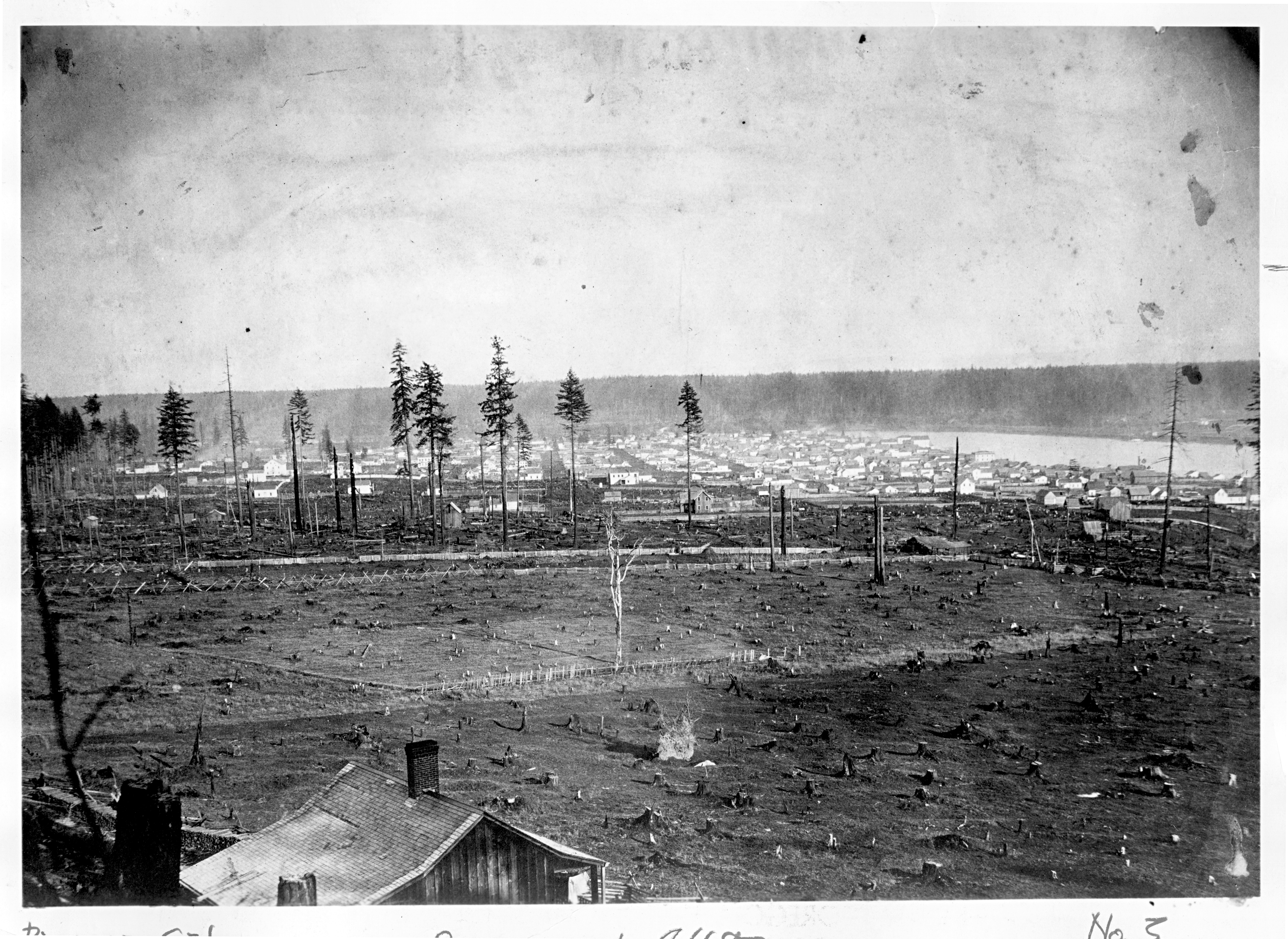Portlandia, a statue designed and sculpted by Washington, D.C., artist Raymond Kaskey, was installed over the west entrance of the Portland Building in downtown Portland in 1985.
In 1981, architect Michael Graves was asked to provide ideas for public art on the Portland Building, which he had designed. Graves proposed using the city seal as the inspiration for a figurative sculpture to be installed on the portico above the building’s west entrance. The seal, adopted in 1878, depicts an allegorical “Miss Commerce” and several symbols of Portland’s agricultural, commercial, and natural resources: a trident, a sheaf of grain, a cogwheel and sledgehammer, a steamship, and a forest. The commission would be funded through the One Percent for Art ordinance of 1980, which, in the case of the Portland Building, would dedicate roughly $200,000 to the installation.
The Metropolitan Arts Commission (MAC) called for designs in 1981. Submissions from artists across the nation were eventually winnowed to five finalists, which were made accessible for public viewing and comment. The choice rested with the Portland Building Selection Committee, a group that included Graves and local artists and citizens appointed by MAC. In October 1982, the committee urged MAC to select Kaskey’s design, a twenty-five-foot statue of a kneeling woman, trident in hand, named Portlandia. The choice was not unanimous: some committee members expressed disappointment with Kaskey’s design and suggested that MAC invite new submissions. Graves, however, championed Kaskey’s vision, and there was overwhelming public approval.
Kaskey began construction of the sculpture in Washington, D.C., in 1983. The arduous process, called repoussé, involved hammering each inch of copper dozens of times. The statue was only the second work of its size using this technique, the first being the Statue of Liberty. In choosing this style, Kaskey believed that he was reviving a lost art—a revival that contributed, in part, to the statue’s exceeding both deadline and budget by the summer of 1985.
Budget constraints threatened to ruin the project when it was time to move the completed statue to Portland. The Portland City Council, however, approved the use of donations, and the $150,000 eventually collected enabled Kaskey to ship the statue in August 1985. The final leg of the journey saw the statue floated up the Willamette River, accompanied by a flotilla of private watercraft. Portlandia was dedicated on October 8, 1985.
Portlandia quickly became a city icon, as residents embraced the “Copper Goddess.” In 1998, Mayor Vera Katz proposed moving the sculpture to the waterfront for more prominent public viewing. Popular sentiment supported the move, but local artists and Kaskey were appalled, explaining that the statue and its site were intrinsically joined. Eventually, the plan was abandoned because of the exorbitant cost of the move and the risk of damage.
Kaskey retains the copyright on the statue’s image and so has avoided that work’s mass reproduction.
-
![Portland building model, by Michael Graves; with Portlandia.]()
Portland Building model.
Portland building model, by Michael Graves; with Portlandia. Courtesy University of Oregon Libraries, 2013_VRC_05240
Related Entries
-
![Portland]()
Portland
Portland, with a 2020 population of 652,503 within its city limits and …
-
![Portland Building]()
Portland Building
The Portland Public Service Building, known as the Portland Building, i…
Related Historical Records
Map This on the Oregon History WayFinder
The Oregon History Wayfinder is an interactive map that identifies significant places, people, and events in Oregon history.
Further Reading
Gragg, Randy. "Lady in Waiting." Oregonian, June 14, 1998.
Wolfe, Tom. "The Copper Goddess." Newsweek, July 14, 1986, 34-35.


